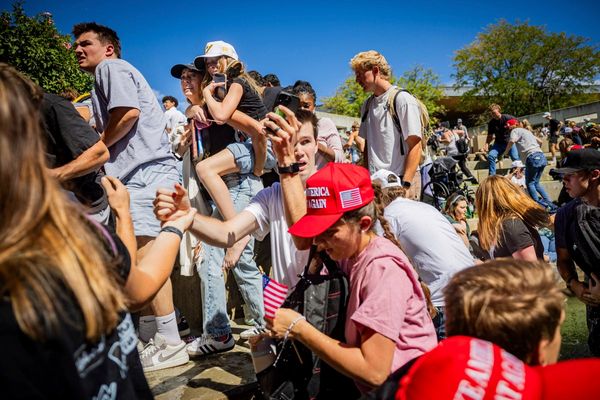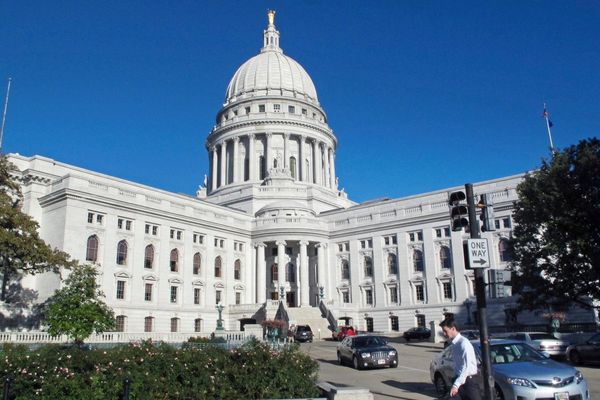
EARLIER this month, global news services carried stories about a big financial settlement in the United States of some $US26 billion ($35 billion) agreed to by four big pharmaceutical companies for allegedly fuelling that country's deadly epidemic of prescription opioid abuse.
What has been less widely reported - in this country, anyway - is that about half of the thousands of tonnes of poppies that are grown every year to make these pharmaceuticals are grown in our good ol' Apple Isle, Tasmania.
It's a fascinating story, because it's a trade that was allowed by regulators in the US - and some would say outright encouraged - despite the lessons of history as to how it would all end.
And it's a farming practice that has received the support of governments here in Australia.
To get an idea as to how the Tasmanian government was thinking now, after the record financial settlement, I asked them a series of questions this week about events across the Atlantic, and about the size of the Tasmanian industry.
I had actually expected some sort of mea culpa. How naive.
In essence, the Department of Primary Industry, Parks, Water and Environment said it took a "great interest" in the US situation but that the Tasmanian poppy industry complied with all of the relevant Australian and international laws and that "once the material leaves Australia, it is subject to the controls of the jurisdiction that it is going to".
There are two main reasons I had been interested in the Tasmanian poppy industry.
One is the role that western nations played in the Chinese "century of shame" that led to the Opium Wars, the Boxer Rebellion and the eventual return of the British mandate of Hong Kong back to China.
I must have nodded off during lessons about the Opium Wars at school.
Images of Chinese opium dens and the racist history of the goldfields had left me thinking it must have been the perfidious Chinese pushing opium onto the West, when, in fact, it was the other way around.
I found that a profound shock some years back when I realised the British East India Company and those other early bastions of capitalism - worshipped for their heroics in "opening up" global trade - were in fact drug runners bringing opium from India and surrounds and effectively forcing it on the Chinese.
England and China were still battling it out in 1900, so this is not ancient history.
We might have brushed it aside through cultural amnesia but there is ample evidence the modern Chinese are alive to the memory of the "Century of Shame", as the opium period is called.
Such slights must lurk in the background of the growing enmity between China and the West.
And then as now, the opium producers saw themselves as simply the legal suppliers to a market.
Which brings me to the other reason I'd been watching these developments: the answers given by the Tasmanian government - that we are simply meeting a legal market - is the same rejoinder given by the coal industry when environmentalists began pushing for Australian coal companies to take responsibility for the Scope 3 greenhouse gas emissions of their product.
This was rebuffed - and I thought logically enough - by the industry, which said that under the global greenhouse accounting system, Australia's Scope 3 emissions were its customers Scope 1 and 2 emissions, and so to include Scope 3 would be double-counting.
The environmentalists dismissed this.
Indeed, from the outset, they called it "the drug dealer's argument".
And they've secured a couple of court judgements - Rocky Hill and Vickery spring to mind - that reinforce the "downstream users" link .
Which brings us back to Tasmania's poppy crop and the US settlement.
RELATED READING
- Australian regulators warn of US-style prescription painkiller crisis
- Prescription painkillers involved in 400,000 overdose deaths in 10 years
- Walmart sued for ignoring warning signs from its pharmacists
- United Nations says synthetic opioid abuse booming globally
I'm not saying the farmers are responsible.
They really are just a cog in a machine driven from the boardrooms of big powerful corporates including Johnson & Johnson of baby powder fame.
(Baby powder, incidentally, is at the centre of another compensation battle, over allegations its talc-based powders could also contain asbestos, and that baby powder was responsible for thousands of cancers including ovarian cancer and mesothelioma.)
The US court cases have revealed that J&J developed a new type of poppy in the mid-1990s that maximised production of thebaine - a poison when ingested - but which made the production of oxycodone and hydrocodone far cheaper than before.
Lobbied by the drug companies, US authorities eased once strict controls on pharmaceutical opioid imports and production.
Farmers competed for prizes - including luxury cars - to produce the strongest poppies.
Despite US drug laws supposed to prevent opioid abuse, more and more prescriptions were being written, with estimates that a quarter of all such pills ending up on the street.
The predictable result was - as one biochemistry professor put it - a "series of cascading effects, including addiction".








